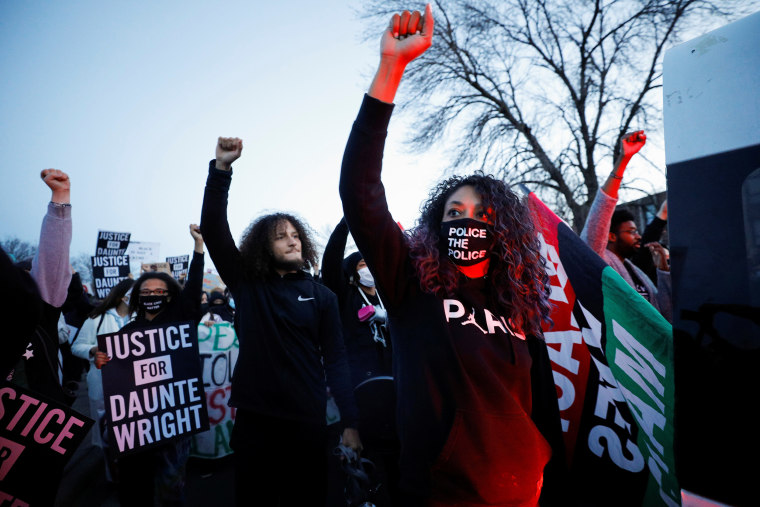BROOKLYN CENTER, Minn. — The ghost of Brooklyn Center, Minnesota, has come back to haunt the state’s most diverse town, local leaders say.
A century before 20-year-old Daunte Wright was shot by now-former police Officer Kim Potter earlier this week, it was known for one of its earliest inhabitants: Earle Brown was a well-known figure, lawman and, some historians say, a member of the Ku Klux Klan.
Driving around the 8 square-mile city, it’s clear that even in death Brown is very much alive.
The Earle Brown Heritage Center, Earle Brown Farm Apartments, Earle Brown Elementary School and other buildings bear his name.
“This stuff has symbolic meaning. It's rooted in racism,” P.J. Hill, vice president of the NAACP in Minnesota, told NBC News. "We have a lot of symbols of past oppression that we, the community, have to see every day and that deep-rooted symbolism and spirit lingers on."
At age 25, in 1905, Brown inherited a farm north of Minneapolis from his wealthy grandfather.
The village of Brooklyn Center formed in 1911 at a meeting on his farm, and "he soon became the settlement’s most prominent citizen," according to the Minneapolis Star Tribune.
Twice elected Hennepin County sheriff in the 1920s, Brown in 1929 launched the Minnesota highway patrol, serving as chief, the paper reported.
However, a revelation about Brown came through the 2013 book “The Ku Klux Klan in Minnesota,” by Elizabeth Dorsey Hatle. She wrote that Brown informed a Minneapolis grand jury in 1923 that he joined the Klan in a spy attempt.
Still, Brown, as the acting sheriff, failed to stop other Klan members from meeting and burning crosses, she wrote.
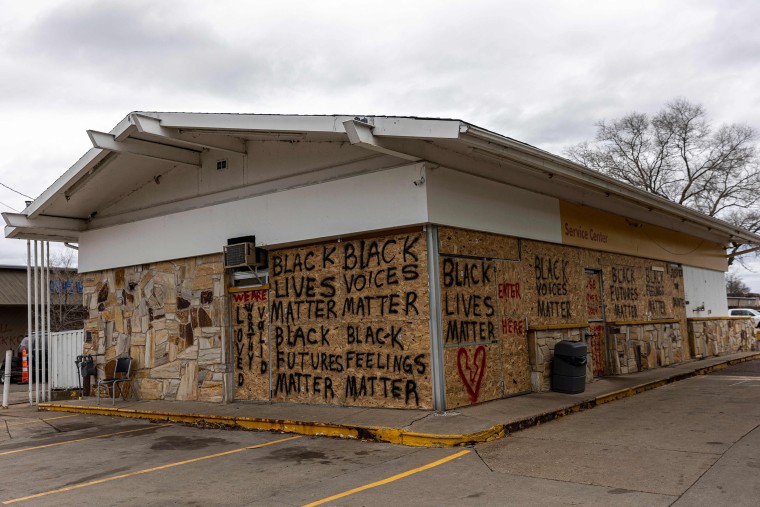
While some of those facts have been disputed, the information has recently led to Earle Brown Elementary School being renamed Brooklyn Center Elementary School.
The Earle Brown Heritage Center, a conference and event venue, had been considering the same move for several months before Wright was killed.
“The tragedy of Daunte Wright’s death has led some to call on the Earle Brown Heritage Center to change its name, since aspects of Mr. Brown’s past do not reflect our organization’s commitment to inclusivity and respect for all people.We agree,” the heritage center wrote on its website.
In the decades since Brooklyn Center was founded on Browns’ farmland, the city has morphed for a multitude of reasons including homeowners searching for affordable suburban housing and residents wanting to leave the rough sections of North Minneapolis, where the majority of Black people live, Hill said.
This backstory leads to present-day Brooklyn Center, Wright’s killing and the protests. Just a short drive away, former Minneapolis police Officer Derek Chauvin is standing trial on murder charges in the death of George Floyd.
One of Brooklyn Center’s other claims to fame is that it is known as Minnesota’s most racially diverse area with a strong community of Liberians, local leaders say. According to the U.S. Census Bureau, Brooklyn Center is 29 percent Black, 16 percent Asian and nearly 14 percent Latino.
Statewide, Black people make up 7 percent of the population and Asians and Latinos are both about 5 percent.
Many immigrants here are from West Africa, particularly Liberia. They are prideful, have made Brooklyn Center their home and feel safe and welcome to some extent, said Jaylani Hussein, executive director of the Minnesota chapter of the civil rights nonprofit Council on American-Islamic Relations, or CAIR-MN.
Hussein has been at the forefront of the citywide peaceful protests all week.
“When Covid hit, nobody was interested in sympathy. People were ready to demand for the government to shut borders, to save lives any way they could and expedite a vaccine. People were in the mood for solutions,” Hussein said. “But for police brutality, we have to constantly battle an idea that it's one officer or one incident. The reality is until we pass meaningful police accountability policies, I don't believe that we can start to turn the corner on officer-involved shootings that perpetuate and target people of color.”
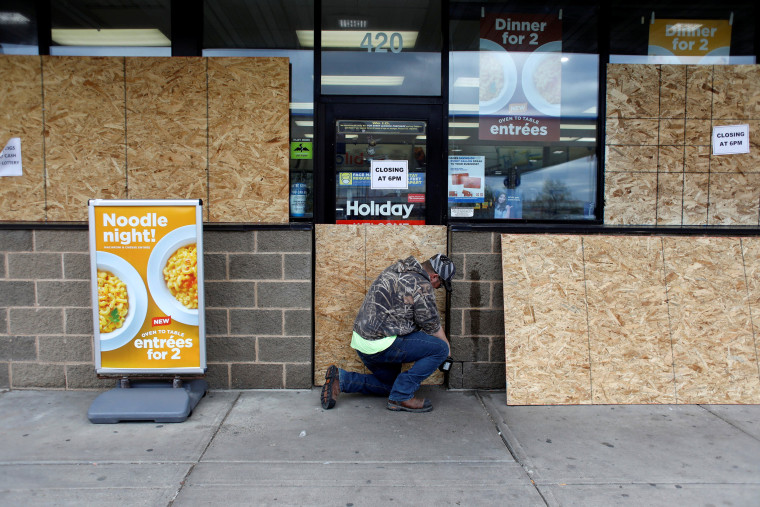
Brooklyn Center is also a low-income area, where the median household income is $59,600, compared to the state average of $71,300.
Grocery shopping usually resembles a difficult treasure hunt. With stores boarded up or operating during truncated hours in anticipation of vandalism or looting this week, residents have had to turn to stop-gap local resources.
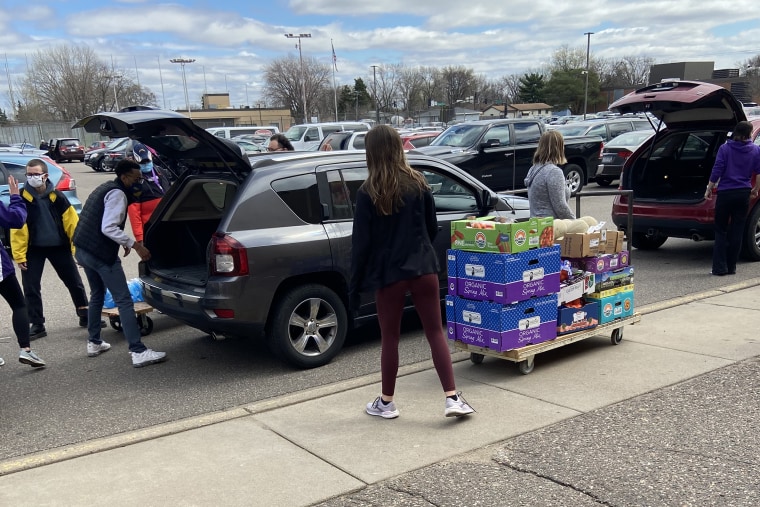
Many flocked to Brooklyn Center High School this week, which, since the start of the protests, has been the source of national food and monetary donations.
Throngs of people wrapped long lines around the school's gymnasium this week for meaningful fresh produce, canned foods, steaks, Hamburger Helper, fruits, snacks and cases of bottled water.
One woman pushed a grocery cart full of Gatorade, paper towels and disinfectant wipes to her Honda truck.

Gladys Greene, 26, picked up some basic necessities for her niece.
"People are in need at the moment," Greene said after loading her vehicle with milk, tissue, diapers and baby wipes. "Most of our grocery stores are closed at the moment."
She said she normally drives out of her way to shop at Walmart and Target.
"We've had some businesses shut down this week. The first thing we figured out was how we were going to support the need of our community," said Tara Drey, director of communications for Brooklyn Center Community Schools. "We knew we needed to become a distribution center."
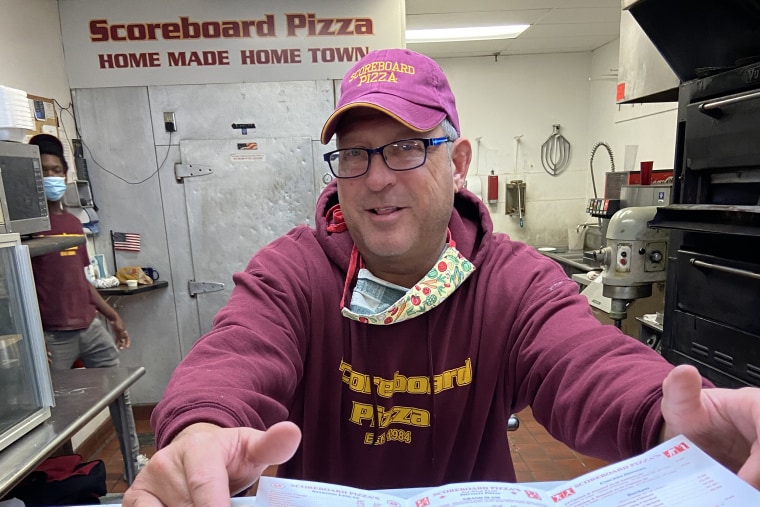
To help out, Scoreboard Pizza, which is inside a strip mall in the heart of where the protests have taken place, has given away boxes of free pizza to peaceful protesters, police officers and city workers.
"I don't choose a side," said Jim Johnson, owner of the 37-year-old pizzeria.
He said he watched the riots unfold in front of his business Monday night.
"The one bad thing is the looting and setting buildings on fire — that I don't agree with," Johnson said. "But that has nothing to do with the protesters. I watched it all happen. It was just a bunch of youths who were taking advantage of a situation not being boarded up. There were no adults around."
Since the riots however, he has been closing five hours early.
Samantha Pree-Stinson, 40, doesn't consider herself a protester but did attend the demonstrations outside the Brooklyn Center police station this week to stand and be counted.
She also didn't agree with the riots.
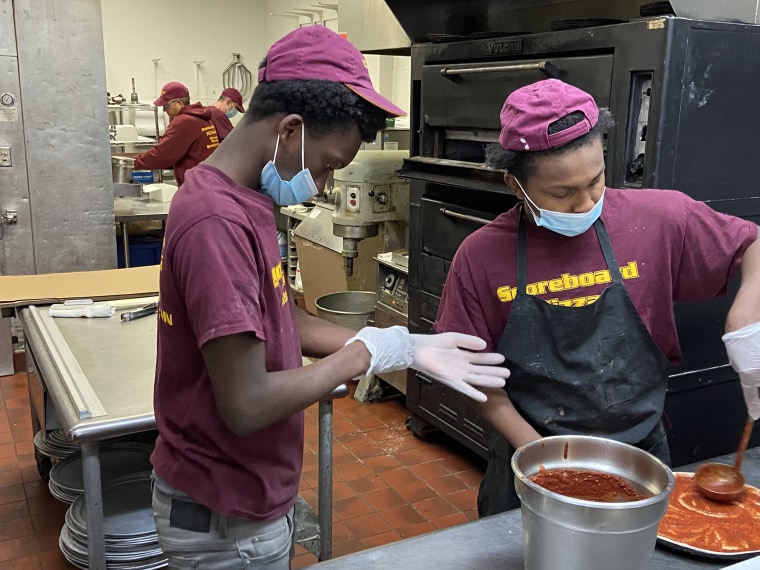
"Absolutely not," she said. "They're burning down our neighborhoods. We've been trying to build up our neighborhoods. The mom-and-pop stores on the corner may not be able to rebuild."
Hussein, who spoke to hundreds of demonstrators this week urging them to take action at the voting polls, said his movement will continue.
"We keep asking ourselves why does it keep happening and historically, we have been stuck with this idea that people care about the issue, but people don't care enough about the issue to demand solutions to fix it," Hussein said.
He said officers who threaten the lives of minorities need to be held accountable and that much more work needs to be done.
"We're still dealing with the same issues and having the same marches," Hussein said. "We haven't really taken steps forward."
